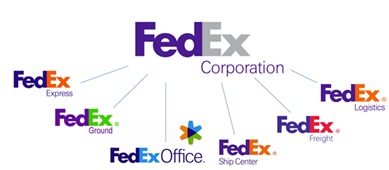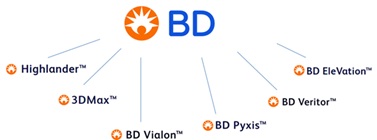When thinking about creating a brand name, everyone wants to name the “baby,” naming every innovation. Yet you don’t need to create a brand name for every new product, service, or feature. While we specialize in creating new brand names, we often tell clients: Don’t.
A brand name don’t always create an asset
Brand names cost money. You pay to name, design, test, and refine them. Then, you have to hire lawyers to trademark them. And more: You’ll have to create all the branded materials, which could include websites, brochures, signage, uniforms, and more. You will also have to invest money in advertising them. Lastly, you will need to conduct regular brand health checks to see how the brand is performing, and refresh and evolve it as needed. If the costs of your brand name exceed the value provided, you have a drain, a cost sink, not an asset.
Naming everything reduces memorability and interferes with selling
Too many names can splinter focus and effectiveness. Instead of investing all the money and effort in creating one strong brand name, you’ll have to split your spending across all of your brands. Having too many names makes your customers have to work harder to understand their options. You have only so much time to make an impression and customers only have so much attention to pay. It is tough to get customers to remember one brand name versus many. In certain industries, brand names just add another layer of complexity to the buying produces, creating confusion as customers struggle to understand what you are selling.
Is one brand name the best approach?
For many companies, putting all resources behind one brand name is the best option. You create one strong brand. If you sell many products and services, you can give them descriptive labels to make it easier for the customer to understand what you offer, creating opportunities to cross-sell and upsell. Marketing is much more efficient.
This approach does have its downsides. One brand may not be able to be everything to everyone. When you acquire another business which has a strong brand, you lose value if you discontinue them and bring them under your Masterbrand umbrella. If you think you may want to divest a business you’ve acquired, it may be better not to change its brand which will increase the value of the transaction. If you start a business in a completely new area, your Masterbrand may not be a fit.
Should you have many brand names?
If you are targeting diverse markets with very different products, or having a very different purpose, then creating and managing many brands makes sense. They must, however, create more value than they cost. You can appeal to different customers. When something bad happens to one brand, it doesn’t taint the rest. You can experiment with creating and discontinuing brands as needed. Each brand has its own equity, making it easy to divest or acquire new ones.
Besides the cost and complexity of managing many brands, there are other challenges with this approach. Investors may not appreciate the scope and value of the company if they don’t know the value of all of your brands. Brands can end up competing against each other, cannibalizing your business. Cross-selling and cooperation is difficult.
Perhaps a hybrid approach to brand names is best
You have many choices if you pursue a hybrid approach to naming. You can have a strong Masterbrand and also a few separate ones. You can create a range of separate brands and link them as sub-brands or endorsed brands connected to the Masterbrand. You can even create different brand names, yet visually link them.
The main watch-out with this approach is that you think intentionally and strategically through each brand name decision. It is all too easy to find your brand portfolio has become a confusing muddle.
12 keys to determining if you need a new brand name
How do you avoid too many brands or too few, or worse, a confusing hodge podge? Your approach to brand naming decisions depends on these factors.
- Audience diversity. Who buys your brand? How do you segment your market? Do all of your products appeal to the same audience, i.e. cancer doctors or are you selling to completely different markets, i.e. cancer doctors and electrical engineers?
- Brand equity. Do you have brands with a particular following, or a unique heritage or equity that is worth holding on to? When Schneider Electric purchased Square D, they kept the name because it was virtually synonymous with enclosed safety switches.
- Brand elasticity. How far can each of the brands stretch to cover different products and markets? Harley Davidson once made a classic blunder applying their brand to wine coolers.
- Product/service alignment. How are other brands in the portfolio positioned and targeted? Are some of your brands complementary, competitive or incongruent? You might sell Tostitos corn chips with Tostitos cheese dip.
- Competitive context. What are competitive naming practices? How do customers view the marketplace? Do your names help you stand out and grab market share?
- Geographic needs. How consistent are needs/preferences across cultures and markets? Strong local brand names might not work in other countries. Not every brand can “travel.”
- Do you have legal control over your brand? You have less leeway with licensed brands.
- Sources of growth and innovation. What products and services are expected to drive increased future volume, share, and revenue for your company? That is why IBM created Watson. IBM was too traditional to stand for the kind of innovation powering the Watson brand.
- Purchase criteria. How do customers buy? Do they ask for products by product name, generic description, or your company brand name? Do your brand names make buying easier? In the Square D example above, electricians would say: “Give me a Square D” when they wanted to buy a safety switch. The original company formed in 1908 ended up changing their name from Detroit Fuse and Manufacturing to Square D.
- Distribution. A related issue is the market or distribution channel. Google offers services to consumers under the Google One name and under Google Workspace for businesses. Walmart, in the early days of e-commerce, purchased Jet.com and operated it as a separate channel before realizing that channel didn’t matter in this case and moving to Walmart.com.
- Business strategy. What brand name will best support the business strategy? Is it a core revenue generator or an experiment? Perhaps it is a business you may spin off in future.
- Uncontrollable factors. Brand naming decisions are not always about business and marketing strategy. Sometimes personalities, legal demands, and powerplays make the “right” decision impossible to implement in reality. The CEO of your organization and the CEOs of acquired organizations may have strong emotional feelings about their brand names. Names usually have to go through legal checks which are often a major impediment to choosing the right name—you always have to have 5 options in the bag.
Brand naming is a serious strategic issue
You generate more revenues and increase cost efficiency when you make careful decisions about brand naming. The instinct of inventors is to sit around and brainstorm a name over a pizza for lunch—an amateurish do-it-yourself approach. Yet naming is too important for the profitability and growth of your company to allow names to be developed on impulse. Do you have questions about naming? We are happy to have a conversation with you.


